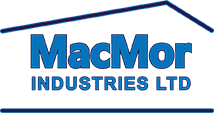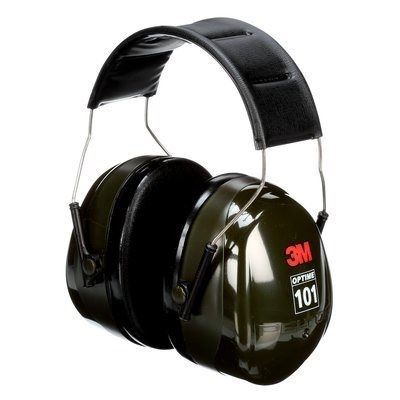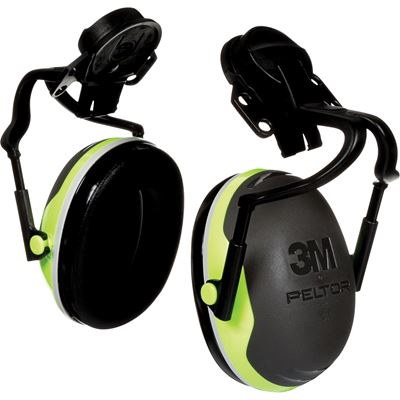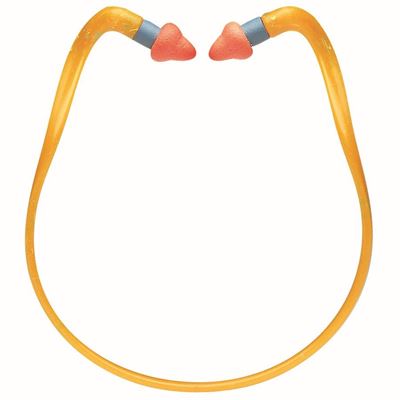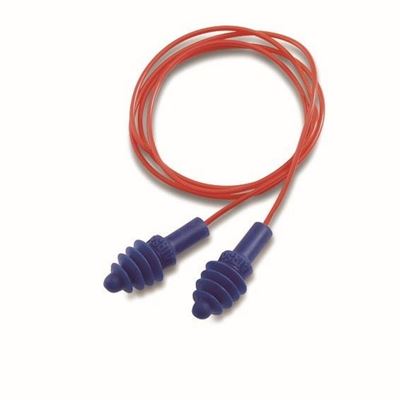Hearing Protection 101 - Everything You Need to Know
Considerations for Choosing Hearing Protection
- Understand dBa exposure limitations
- Get 8 hour Time-Weighted Average (TWA) to determine noise exposure on jobsite.
- Determine your province's noise exposure limit.
- Calculate the Noise Reduction Rating (NRR) needed to achieve an exposure level below your province's maximum permitted level.
- Think About Your Work Site and Job Tasks
- Do you require the ability to communicate with others while wearing hearing protection?
- What type of machinery is around and how much noise does it produce?
- Will hearing protection interfere with other Personal Protective Equipment?
- Decide What is Most Comfortable and Convenient
- The most comfortable solution that meets job requirements is often best.
- Uncomfortable Hearing Protection often leads to an improper fit, which will negatively impact the protection coverage.
Provincial Exposure Limits
The presence of noise pollution varies from one work site to another. On a typical construction site for example, the main sources of noise are machinery, tools, and equipment such as grinders (106-110 dBa), saws (100-115 dBa), compressors (85-104 dBa) and more. When choosing hearing protection, it is important to first look up the maximum Permitted Exposure Limit (PEL) in A-weighted decibels (dBa) within the province where the work is taking place.
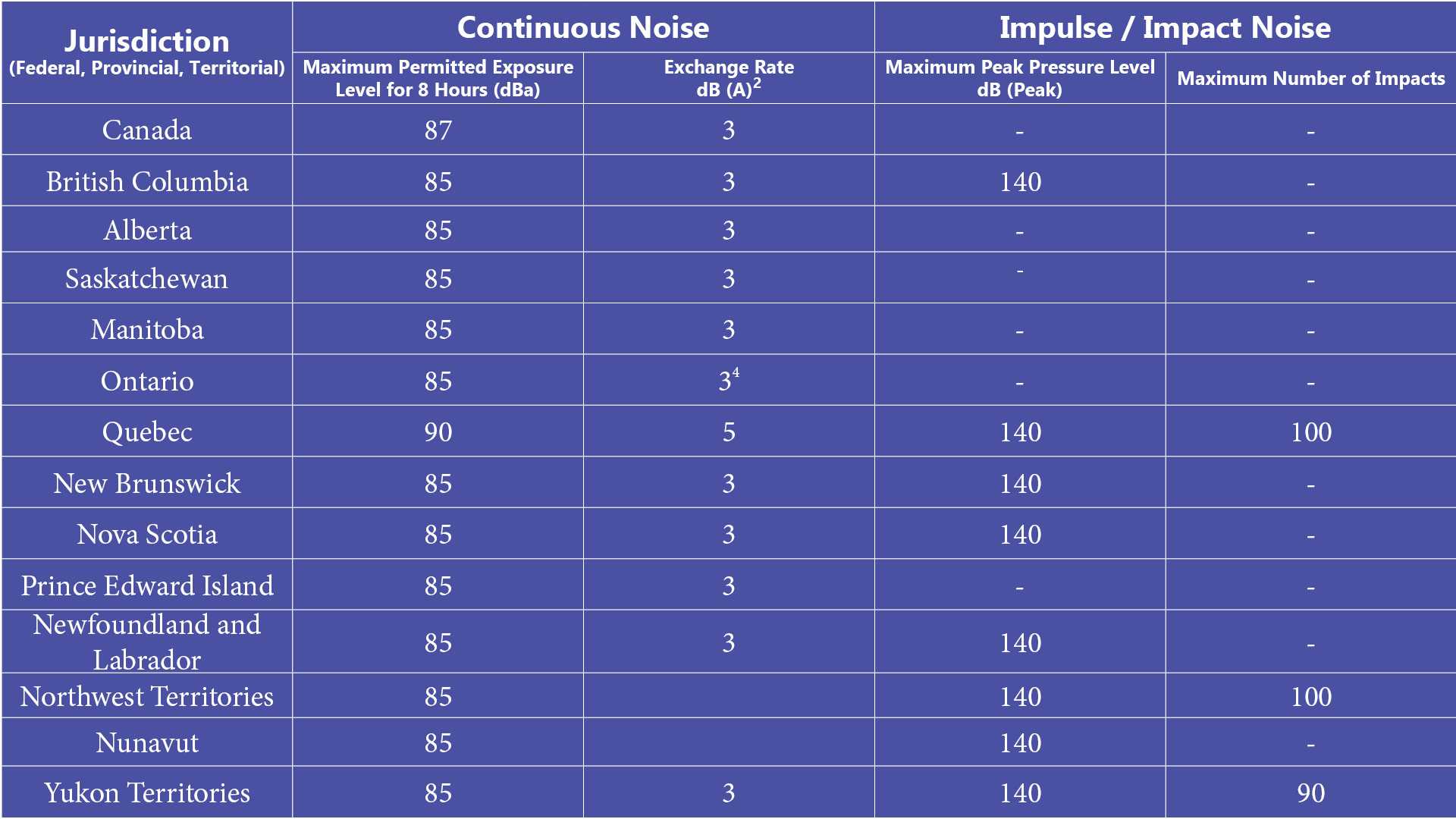
Once you know what is permitted in your province, you will want to have your job site's noise level evaluated for an 8-hour time-weighted average (TWA). Doing this will help you determine the level of hearing protection that will be required to bring the experienced noise levels below the provincial limit. This exercise would most likely be performed by the safety team assigned to the site.
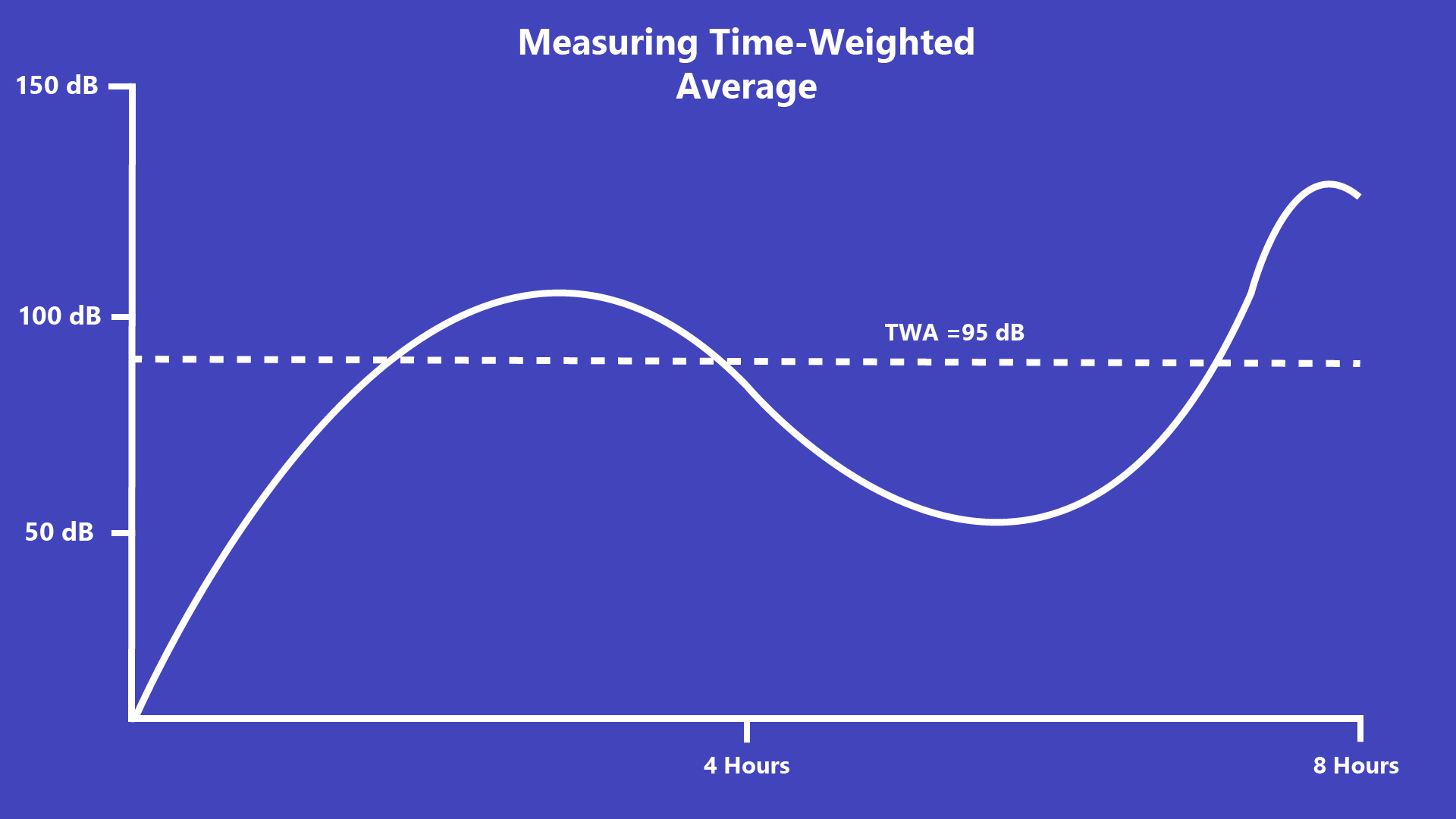
Calculating Actual Noise Exposure Levels
Once the TWA noise levels are known for the work site, the actual exposure level you will experience can be calculated. For example, suppose the TWA determines there is an average noise level of 100 dBa on a job site, and workers are using earmuffs with a 26 NRR. The equation below can be used to determine the actual noise exposure workers will experience (assuming proper fit and use of the hearing protection).

This equation will help you determine if your hearing protection is adequate or insufficient for the work environment. In this particular example, the hearing protection just meets the requirements for use in most provinces.
Furthermore, If you are a safety manager looking to outfit your crew with proper hearing protection, you can rearrange this equation to solve for the NRR required to keep workers below the maximum noise exposure level.
Calculating the NRR You Need
If we look back on the previous example, we can calculate the NRR needed for earmuffs to reduce the noise exposure just below the maximum threshold (e.g. 85 dBa) by rearranging the equation as follows:
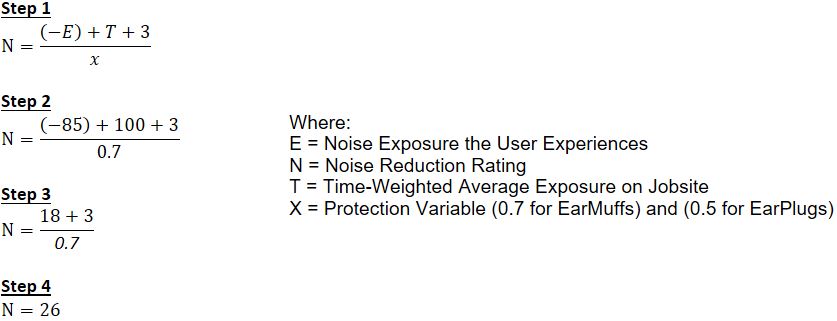
*in this case, set E to the maximum noise value you wish to be exposed to. In most provinces, this number is 85 dBa. If you wish to err on the side of caution, this can be lowered to whatever level you feel works best for your team (keeping in mind that the hearing protection with greater NRR and higher CSA class are typically more expensive).
Combining Earmuffs and Earplugs - What Coverage Do You Really Get?
Now suppose a worker decides to double up and use earplugs inside their earmuffs (also known as dual coverage). While people often think "Perfect, I nearly doubled the NRR", this is a common misconception that often needs clarification.
For our next example, let’s use the previous data with the addition of earplugs. The equation for calculating your exposure is now:

As demonstrated by the equation above, wearing earplugs inside earmuffs only adds 5 NRR, and the protection variable is slightly altered from 0.7 to 0.65 to adjust for the use of earplugs.
CSA Classification for Hearing Protection
Like most things PPE, Hearing Protection levels are organized by class. Under the CSA Z94.2-14 standard, the 4 primary classifications of hearing protection are: C, B, A and Dual.

Class C hearing protection is recommended for dBa exposure ≤ 90, Class B is recommended for dBa exposure >90 up to and including 95 dBa, and Class A is recommended for exposure up to and including 105 dBa exposure.
For exposure >105 dBa, the CSA Standard recommends Dual Coverage. With that said, you cannot pair just any combination earplugs with earmuffs. When combining hearing protection, a minimum of Class B earmuffs and Class A earplugs must be used. Note: it is still recommended that the duration of exposure be limited when exposed to elevated TWA noise levels.
With A and B classifications, there is also an L variant (AL and BL) which signifies that the hearing protection is able to reduce noise exposure by 20 dBa at low frequency (125 Hz). This can often be a deciding factor for safety officers when selecting hearing protection since products with L classification generally provide greater coverage.
What Type of Hearing Protection is Best for You?
- Foam
- Multi-Use
- Banded
- Over-Ear
- Communication
- Foam Earplugs are best for situations where hearing protection solutions may get in the way of your other PPE.
This solution is portable, convenient, and can be thrown away when you're done with them.
- This is best for workers who may need to use hearing protection less than the average worker on your site. Foam
earplugs are available in various formats: no-roll foam which works for quick & easy insertion; roll
foam which is gets rolled, inserted, and then expands to provide a tight seal; and corded foam earplugs which
helps to keep your earplugs in reach and avoid accidentally losing a plug if they get knocked out.
- If all the above sounds ideal, but you need hearing protection on a more consistent basis, Multi-Use hearing
protection may be best for you. They are perfect for confined spaces, work seamlessly with other PPE and can be
reused the next day with proper cleaning.
- There are “no-touch” solutions that allow users to curb contamination transfer from hands to ears when the
application demands it. Workers who are vulnerable to hearing protection discomfort might seek comfort in a
tapered solution as it provides a more gentle fit inside the ear.
- Banded hearing protection can serve many benefits to the user. For example, the Howard Leight Quiet Bands
Banded Earplugs provide a unique figure that prevents the buds from being contaminated in the event that the
band falls to the ground.
- Additionally, most variations of banded earplugs offer multi-use and offer the same benefits as such.
Lastly, they are available in 3 distinct forms, in-ear, partial in-ear, and outside ear to cater to personal
preference and application. The band allows for easy use and removal, making it ideal for work environments
with intermittent noise hazards.
- Over-Ear solutions (i.e. earmuffs) offer the best retention of all hearing solutions. As shown earlier, earmuffs
retain 70% of their NRR rating in comparison to earplugs which only retain 50%. In short, highly rated
earmuffs will always provide superior results to earplug. With that said, one of the key
disadvantages to earmuffs is that their performance is often greatly impacted by safety glasses breaking the
seal
around the ear.
- If you need to be able to communicate on the job while still protecting your ears from noise pollution,
there are a few options for you to choose from depending on the application. Options include Earmuff cup
replacement accessories that include communication technology, Bluetooth device pairing, radio connections, and
true wireless communication channels.
Advantages and Disadvantages of Earplugs and Earmuffs

Management’s Role in Hearing Protection
- Measure Jobsite Noise Levels
- Calculate the time-weighted average noise levels over a typical 8-hour day to determine what hearing protection product is required.
- Make Sure Adequate Hearing Protection is Available
- Reasonable options should be made available to accommodate for factors such as confined space work, PPE and the preference of the workers.
- Choosing the right hearing protection involves keeping the exposure level within the limits without going overboard. Contrary to popular belief, there is such a thing as having too much hearing protection where workers might not be able to listen for warnings or incoming hazards.
- Hazard Communication
- Help workers identify and mitigate risks on-site to ensure workers are properly informed
- Engineering Controls
- For more information on this topic, check out this CCOHS Article
Signs to Identify Hearing Loss
Hearing protection plays a critical role in protecting workers' hearing in the short and long term. Improper implementation can result in serious Noise-Induced Hearing Loss (NIHL).
This condition, as well as many other Noise-Induced conditions, is permanent and often spotted only after it is too late to address. This is why proper hearing protection is so important. If you answer ‘yes’ to any of the following questions, it is recommended that you seek medical advice:
- Do you have difficulty understanding speech in relatively noisy environments?
- Do you often need to turn up the television volume?
- Do you frequently ask people to repeat sentences?
- Is your hearing not as good as it was 10 years ago?
- Have family members noticed a problem with your hearing?
Frequently Asked Hearing Protection Questions
- Where to buy hearing protection?
- MacMor Industries carries a variety of hearing protection products from some of the industry’s most recognized manufacturers such as 3M and MSA
- How to protect your hearing as you age?
- Always wear hearing protection when exposed to noise levels greater than occupational exposure limits (OEL). In Canada, a majority of provinces set this level at 85 dB. It is also imperative that when exposed to noise levels over the OEL you wear hearing protection that has an NRR that lowers your exposure below the OEL
- Can noise-cancelling headphones be used as hearing protection?
- The simple answer is no. While noise-cancelling features do create a seal in the inner ear, there is no current data available on the effectiveness or what level of NRR could be obtained by using them. Furthermore, many noise-cancelling headphones have also been found to implement a technology called Active Noise Cancelling which uses destructive interference (i.e. white noise) to create this sensation of noise-cancelling.
- When is dual hearing protection required?
- Dual hearing protection refers to the use of earplugs inside of earmuffs. This is only required when the user needs more protection than what can be offered by plugs or muffs alone. With that said, it is important to understand that combining the two products does not provide you with double the Noise Reduction Rating. See Combining Earmuffs and Earplugs for more details.
Contact Us
If you or your crew are in need of Hearing Protection, please do not hesitate to contact us. One of our safety specialists would be more than happy to help you out!
Like the Blog and Video? Please consider sharing it with your friends and your team.